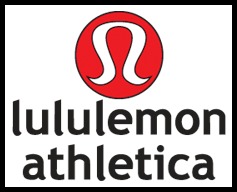Radical Differentiation at Lululemon
Last week, the Wall Street Journal featured a piece about Lululemon Athletica’s “secret sauce.” Although many stories have been written about the retailer of yoga-inspired athletic apparel, this one succinctly relayed the elements that distinguish Lululemon from other brands.
The article talked about the “mystery” of the chain’s strategy, which has propelled it to become a $10BB retailer in less than 15 years. It’s clear Lululemon practices what designer Marty Neumeier preaches in his book, Zag — The #1 Strategy of High-Performance Brands. Marty explains, “Differentiation, the art of standing out from the competition, is not front-page news. What is front-page news, in a world of extreme clutter, is that you need more than differentiation. You need RADICAL differentiation…When everybody zigs, zag.”
Here are three ways Lululemon zags:
1. It doesn’t do formal market research or customer relationship management. “Instead,” the WSJ piece reports, “[CEO Christine Day] spends hours each week in Lulu stores observing how customers shop, listening to their complaints, and then using the feedback to tweak product and stores.”
It also trains its employees to be customer advocates (a role I recently wrote about in “The Sales Associate of Tomorrow.”) Salespeople eavesdrop on customers as they fold clothes near the fitting rooms, so they can overhear complaints and pass them along. And, customers themselves are invited to give input to the company by writing suggestions on a chalkboard that are sent back to headquarters.
Of course research and CRM are valuable tools for most companies – but, sometimes there is no better way to understand your customers than to simply listen.
2. It uses scarcity instead of discounts to generate demand.
“The goal is to sell gear at full price and to condition customers to buy when they see an item rather than wait. ‘Our guest knows that there’s a limited supply, and it creates these fanatical shoppers,’ says Ms. Day.”
Lululemon has trained its customers to “buy now” instead of waiting for promotions or looking for redlines. In fact, the WSJ reports that it sells 95% of its gear at full price and it never puts its core items on sale. Scarcity is a much more sustainable and brand-building approach to stimulating purchase conversion.
3. It doesn’t offer top-notch customer service.
The piece quotes CEO Day as saying, “We aren’t Nordstrom. We aren’t your personal shopper.” Lululemon’s return policy is “very strict,” according to the WSJ: no products accepted after 14 days, and all must be unwashed and unworn, with original tags.
This is not to say that the company isn’t friendly or doesn’t care about its customers. A quick spin through its blog, tweets, and Facebook page and visits to its stores prove otherwise. But it’s clear it’s not trying to be something it isn’t.
Zag-ing is really at the core of Lululemon. The company was started by a guy, a surf, skate and snowboard business veteran. He created an underground yoga clothing movement by selling products made from performance athletic materials out of a design-studio-cum-yoga-studio.
The company has enjoyed extraordinary success every since. I’m sure Marty Neumeier isn’t surprised. In Zag, he writes, “Traditional differentiation is an uphill battle in which companies lavish too much effort on too few competitive advantages: the latest feature, a new color, a lower price, a higher speed. Radical differentiation, on the other hand, is about finding a whole new market space you can own and defend, thereby delivering profits over years instead of months.”
related posts:
- differentiation through specialization
- differentiate your way to success
- companies to keep an eye on in 2011